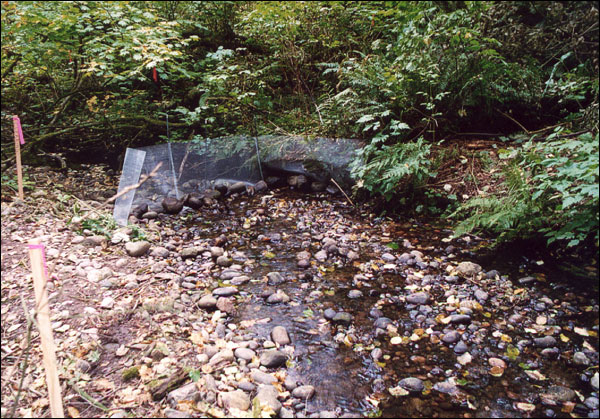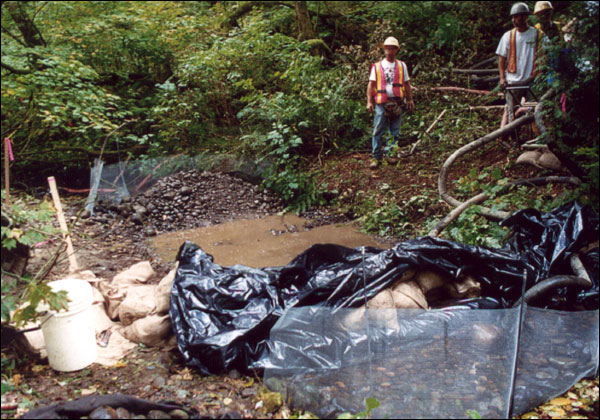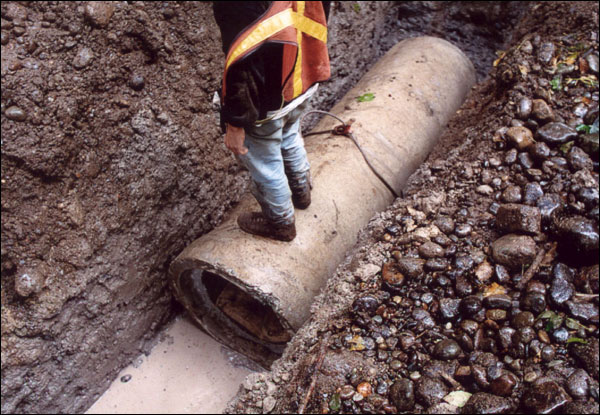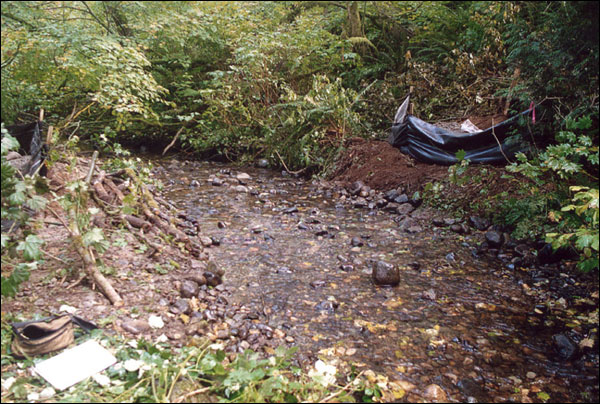Fish and Amphibian Salvage
Fish and amphibian salvaging is required before dewatering a section of a watercourse for in stream works. Phoenix personnel have years of experience in fish and amphibian salvaging using electrofishing.
Electrofishing is a process which utilizes an electric field in a section of a watercourse which causes any aquatic animal in the section of the watercourse to be captured and moved downstream without causing any harm to the animal. One example of an in stream work which Phoenix was involved in is described below.
Salmon Stream Case Study

Before trenching across a salmon stream for a sewer pipe, all fish are captured by electrofishing and moved downstream. A wire mesh fence is installed to keep the fish from swimming back into the work area.

The stream flows are diverted around the work area from an upstream temporary coffer dam. This ensures that stream flows are not cut-off while the sewer pipe construction takes place. The work area is isolated from flowing water (working in the dry) to avoiding the release of silty water to downstream areas during construction activities. The stream bed gravels (substrates) have been collected into separate piles, according to size, so that they can be placed back in the stream channel after the construction is complete.

The sewer trench is constructed as quickly as possible. For this stream crossing, the concrete pipe is placed first, and then long lengths of hard plastic (HDPE) pipes without any joints are threaded through the concrete pipe. No leaks will escape the hard plastic (sanitary sewer) pipe, and the concrete pipe will ensure the plastic pipe does not float up and become exposed on the stream bottom. Clay soils are placed in the trench and over the pipe before the stream gravels are returned.

The sewer pipe trench has been constructed, the stream bed replaced, and stream flows restored – all in the same day. The stream bed gravels were hand placed and sculpted to re-establish the stream channel and banks as close to the same form as before the in-stream works as possible in order to minimize potential impacts on the environment.
